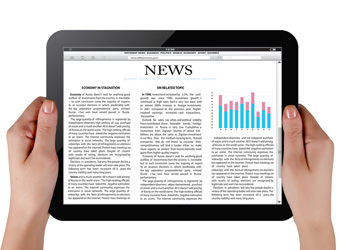Some Known Details About Popular News
Some Known Details About Popular News
Blog Article
Not known Details About Popular News
Table of ContentsHow Popular News can Save You Time, Stress, and Money.The Only Guide to Popular NewsPopular News Fundamentals ExplainedThe Best Strategy To Use For Popular News
Age is likewise a variable in the means individuals watch the duty of social networks. More youthful social media information consumers are extra likely to claim it has actually influenced their discovering right. Regarding fifty percent of social media sites information customers ages 18 to 29 (48%) state information on social media makes them better notified, compared to 37% of those 30 to 49, 28% of those 50 to 64, and 27% of those 65 and older.Reporters evaluate news values when figuring out whether or not to cover an occasion or statement. Here are the worths that we take into consideration when developing an outreach approach. Probably the most vital aspect of newsworthiness is whether the story being connected effects an information outlet's target market. For instance, let's imagine scientists have discovered a cost-effective option to a typical issue.
Research study on a state's brand-new tax obligation code most likely will not produce the exact same rate of interest throughout state boundaries. Periodically specialists can aid center a bigger national story that affects more than just a city or state.
If you are publishing newsworthy study, loophole in MarComm before the write-up being released so that the pitch can highlight the most recent aspect of the story: the publication of the research. Events and news that entail prominent figures are most likely to generate media coverage. Check outs from national figures frequently require months of prep work as a result of awaited neighborhood rate of interest.
7 Simple Techniques For Popular News
We can help mitigate potential reputational danger with these tales while also enhancing the probabilities of generating coverage. While numerous of the above information worths are intertwined, human interest stories commonly stand apart.
Human passion elements can add news value to various other tales that might show up to be lacking in the other worths. The uniqueness or strangeness of a scenario can help influence whether or not a news outlet is likely to cover a story. While this is not an exhaustive listing, inspecting to see if your story or occasion has these top qualities prior to calling us will certainly aid you determine which elements hold the most news value.
The study finds that slightly over half of all united state adults subscribe to news in some formand roughly half of those to a newspaper. And in contrast to the concept that youngsters will certainly not spend for information since info on the net is totally free, almost 4 in 10 adults under age 35 are paying for information.
There is additionally considerable evidence that more customers can start to pay for news in the futureif authors can recognize them and offer them well. Half of those who do not pay for news proactively choose news and resemble clients in different methods. And nearly 2 in 10 of those who do not register for news currently suggest they are inclined to begin to pay in the future.
All About Popular News

Individuals are drawn to news generally for two factors over others: A need to be informed people (paper subscribers in specific are extremely inspired by this) and due to the fact that the magazine they register for excels resource at covering certain topics about which those customers especially care - Popular News. While there are a host of factors, the No
Greater than 4 in 10 likewise mention the truth that friends and family subscribe to the same product. Greater than a 3rd of individuals claim they initially subscribed in reaction to a discount or promotion. In print, people also are relocated greatly to register for obtain vouchers that conserve them money, something that has untapped ramifications in digital.

A Biased View of Popular News
We asked everyone that informed us they have a regular cost-free source of news just how likely they would certainly be to pay for it. Greater than a quarter (26 percent) state they would go to the very least rather likely to begin spending for itand 10 percent are extremely or extremely most likely. These most likely payers have a tendency to be information hunters, and they additionally have a tendency to be individuals who currently spend for a news registration along with the resource they adhere to free of charge.
Of those that do pay, 54 percent subscribe to papers in print or digitally, which represents 29 percent of Americans overall. The majority of them get a print publication along with their paper and spend for two to four information resources Recommended Site in total, some much more. And while 53 percent are long-time customers (5+ years), even more than a quarter (27 percent) have actually purchased their newspaper membership within the previous year.

Report this page